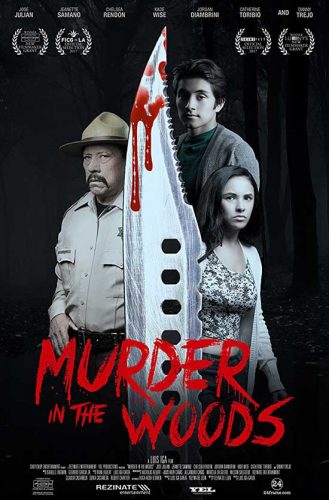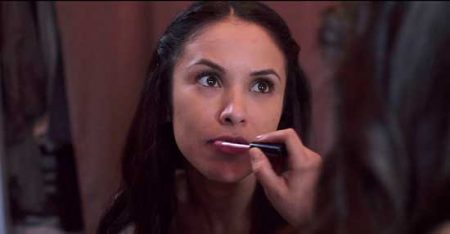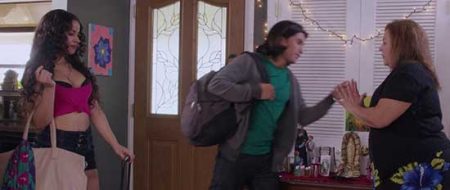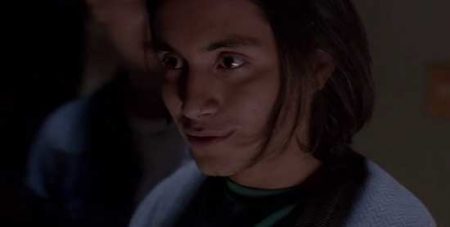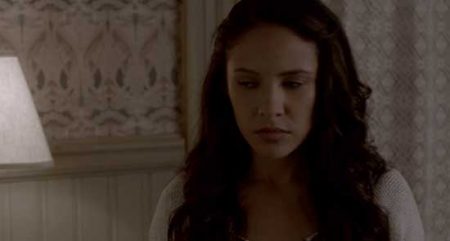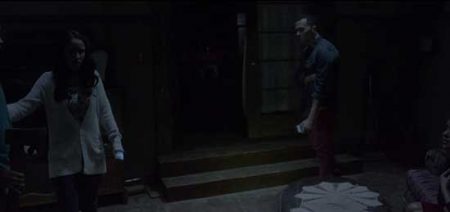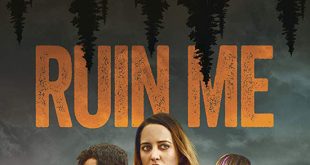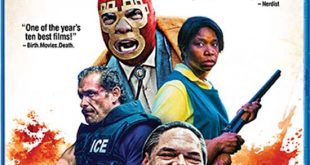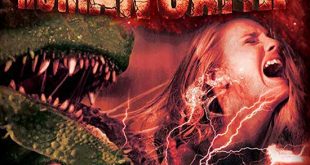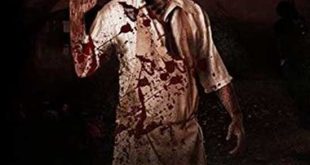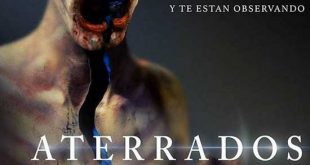Soon after arriving to a mysterious cabin in the woods, a group of teens discover the dark secret it holds, which forces them to fight for their lives.
REVIEW:
I want to take a moment to point out the fact “Murder in the Woods” is a bit of a breakthrough film. It features an all-Latino cast and not one of them is portrayed as a street thug or drug dealer, as tends of happen in standard Hollywood films. You see middle-class people with their own families, goals, and dreams.
A huge percentage of the people behind the camera appear to be Latino as well. Where better than cinema to realize that you can make your own opportunities with some teamwork and a shared vision. I hope both cast and crew keep working toward creating a living Latino culture in film.
Moving on to the film itself, let’s take a look at what we have to work with.
A group of teens decide to travel out to a remote house for a party. After damaging the vehicle on the road, the group make it to the house before the vehicle dies. Stranded there, the fun and games become screams as someone or something start killing the teens one by one.
“The Evil Dead” took that same battered cliché and became iconic, so the premise still has life in it. But not here. Before I come across as someone kicking a cute puppy when it is just learning how to walk, let me explain things in a more positive way.
From the basic story to the characters and down to the overused jump scares, “Murder in the Woods” cleaves to bog-standard clichés and tedious tropes. Yes, that is a bit blunt, but it is the truth. If you have seen at least 15 horror movies, you know everything you need to know 20 minutes into this film. You even get an eye-rolling bit of deus ex machina at a climactic moment.
How am I being positive? Allow me to explain.
I understand that even if you are making a positive statement with your choice of cast/crew, you still have to sell the film come the end of the work day. One way to make sure you can hit wider markets is to settle for what sells, and doing what has sold before is usually a safe bet. That could explain the rather vanilla story and characters, so I get the “why” of going this route.
A story is only as good as its characters; without strong and/or relatable characters, even the most masterful story and plot will tank because no one cares. In “Murder in the Woods”, the most awkward element is the simple fact that the characters may be played by Latinos, but they are cardboard cutouts of every Anglo horror character created. While I can groove to the fact that, yes, a Latino can play any role an Anglo can, wouldn’t it be better to give your characters at least some character elements that reflect the rich Latino culture they are a part of? We all share similar hopes and dreams, but the flavor is in the details. Give your characters some personal depth, and you will involve your audience even if they can see where story is going.
A prime example from the movie is the grandmother who performs a ritual based off Christian faith, but the grandson asks her to stop because he doesn’t want his friends to think she is a witch. Why not make that part of his character? He is embarrassed by his grandmother’s clinging to an old ideal. It could explain why he is socially awkward. The elements are there, but the script never blends them together. The other characters don’t even get that much of a set up.
The more I learn about this film, the more I want to support it. I think this a great first step even if the film itself does not work due to the crippling dependency on clichés and boring tropes to keep things moving because the characters are too bland to carry the film. Give us more realistic characters and include more Latino culture to expand our horizons and to give your follow-up films a more personal and unique touch. Just keep growing; the horror community needs new and fresh voices and visions.
By the way, the gore is pretty darn good, but a bit few and far between for fans of the red stuff.
Check out “Murder in the Woods” and help support it, but don’t expect to find a minor classic. See this with more of the “pay it forward” school of thought.
 Horror News | HNN Official Site | Horror Movies,Trailers, Reviews
Horror News | HNN Official Site | Horror Movies,Trailers, Reviews
